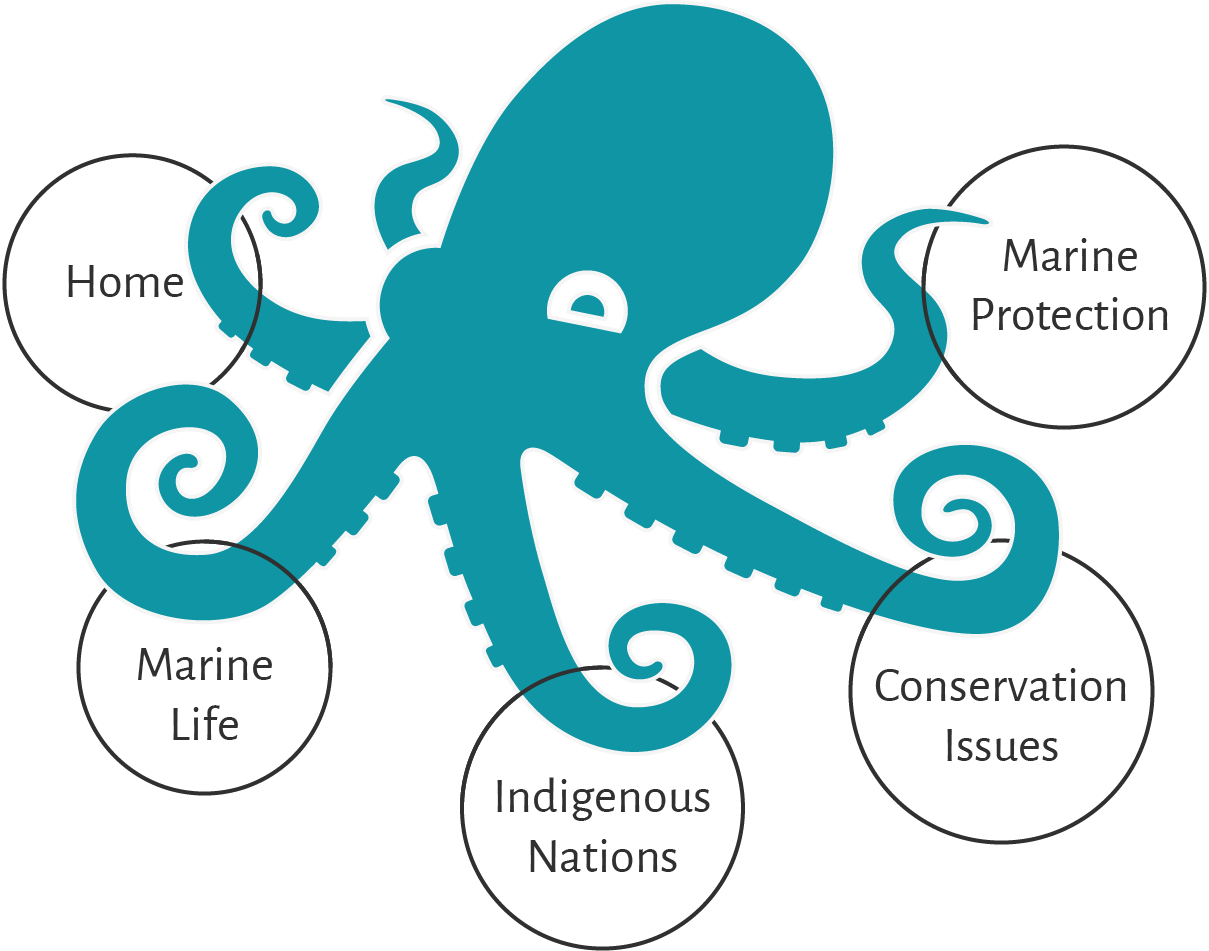This area is the ancestral and current home of many First Nations , each with its own unique culture, resource use, laws, values, and priorities.
“For thousands of years First Nations carefully managed the abundance of natural resources in the sea and on the land by relying on our knowledge of seasonal cycles to harvest a wide variety of resources without harming or depleting them. Many believed the abundance of natural resources on BC’s coast would last forever. They were wrong. For those of us who live in coastal communities the cost of industrial exploitation has been enormous. The most obvious cost is the depletion of forests and fish. It’s clear an economy based on exploitation of natural resources is no longer viable. ”
Nathan E Stewart
A poem about a diesel spill in Heiltsuk Territory; written and performed by Heiltsuk First Responder Megan Humchitt. On October 13, 2016, a tugboat pushing an empty American fuel barge from Alaska to Seattle ran aground near the Heiltsuk Nation community of Bella Bella. The Nathan E. Stewart crashed against rocks at the mouth of Gale Creek, a critical site for seafood gathering, fishing, hunting, and for practicing and teaching traditional culture for Heiltsuk people.
Together On The Coast
Filmmaker Twyla Roskovich worked with the North Coast-Skeena First Nations Stewardship Society to create this film about the importance of the marine environment on the North Coast of British Columbia.
Central coast families have fished these areas as far back as the last ice age, 14,000 years ago.
The Great Bear Rainforest is one of our planet’s greatest hopes for supporting Indigenous peoples to protect a globally-significant coastal and marine ecosystem.
Indigenous cultures in the Great Bear are deeply intertwined with the ecosystems they depend on. Many First Nations continue to choose a healthy ecosystem over promises of short-term wealth offered by the proponents of pipelines and other industrial projects. They rely on the natural wealth that their ancestors cared for and influenced in many ingenious and positive ways. All of these Nations continue to assert their traditional rights, laws, and customs as they relate to caring for the lands and waters of their unceded territories.
The connection between herring and people here is older than the cedar trees. Six-thousand-year-old herring bones were recently unearthed from a shoreline archaeological dig at Hakai Passage. Researchers from Vancouver’s Simon Fraser University studied 435,777 bone samples collected from 171 First Nation archaeological sites from Washington to Alaska – including 34 British Columbia locations – and found that herring was the dominant fish species throughout the Holocene.
There are few, if any, places that fish can escape humanity’s efficient, technology-driven fisheries, but one fishery remains elegant and traditional: the spawn-on-kelp (SOK) fishery. Other than replacing canoes with flat-bottomed, aluminium herring punts, the traditional herring-spawn fishery has operated in the exact same way for millennia.
Indicators of when the herring spawn will begin include the tides, bird and mammal life, and air and water temperature.
As the longer days of spring loosen winter’s grip, the people of Bella Bella, Klemtu, Gitxaala and other traditional herring-spawning territories on the north Pacific north and central coast focus on what locals call "herring weather".
The Heiltsuk and Kitasoo/Xai’xais Nations are fortunate to have some of the most productive herring spawning grounds in their territory and have been at the forefront of the conservation battles to protect this endangered foundation fish species.
People here follow the lunar cycle closely, and in Heiltsuk culture "when the moon tips over"marks the beginning of one of the greatest and rarely observed natural events on the planet.
This seasonal event is so culturally revered and vital to Heiltsuk life that it signals the beginning of their traditional New Year. Before the spawn, fishers harvest hemlock trees from protected groves, and kelp fronds and yaga – stringy seaweed – from the more exposed outer coastal beds. In the quiet coves and channels of the traditional spawning areas, the trees or kelp are suspended from floating logs anchored to rock. The reason the herring choose these particular sites to spawn is known only to the herring themselves. First Nation families often choose multiple spawning locations to increase their odds of intercepting the spawn with their newly-formed hanging gardens. The spawn is a valued resource, and not all First Nation territories have such widespread herring-spawning grounds as the Heiltsuk. For decades, the Heiltsuk and other First Nations have been advocating for a sustainable fishery that would allow central coast stocks to return to their former abundance.
Keep Exploring




















